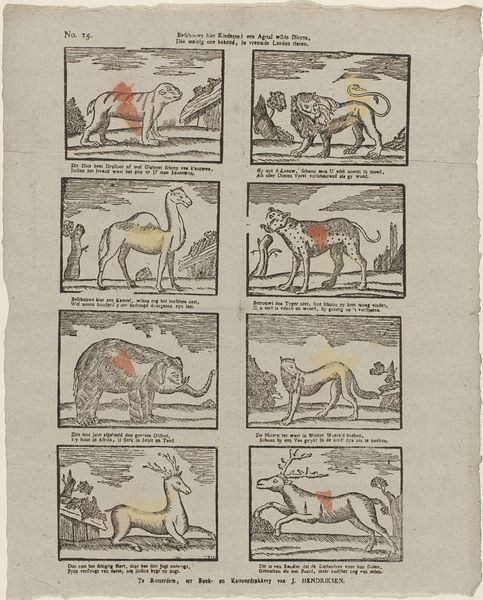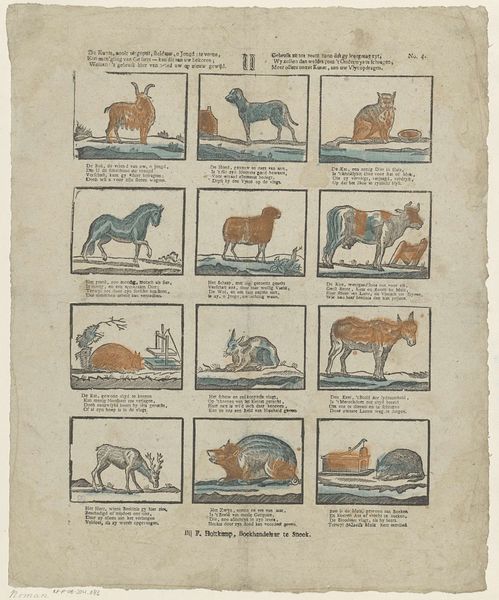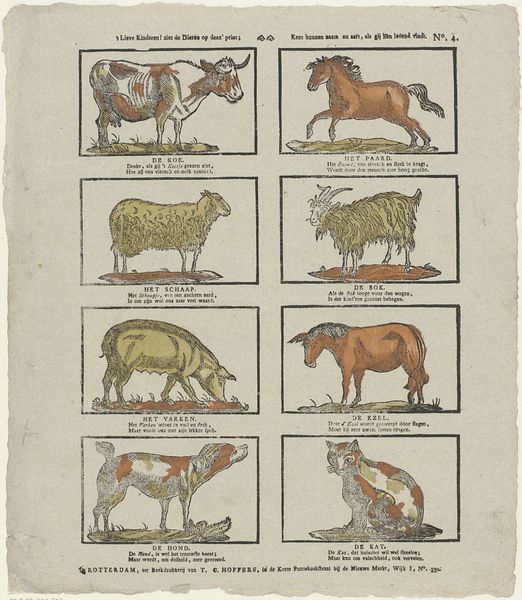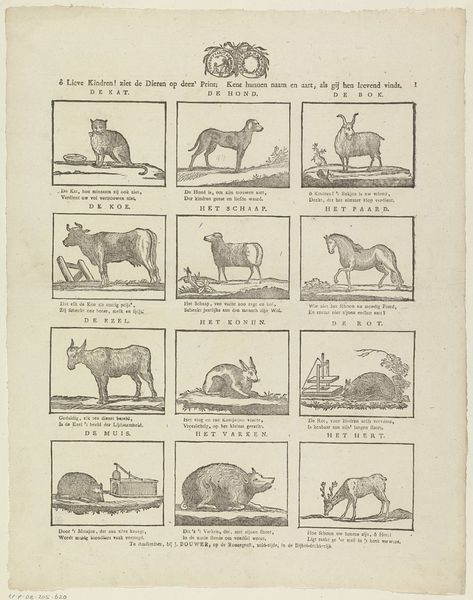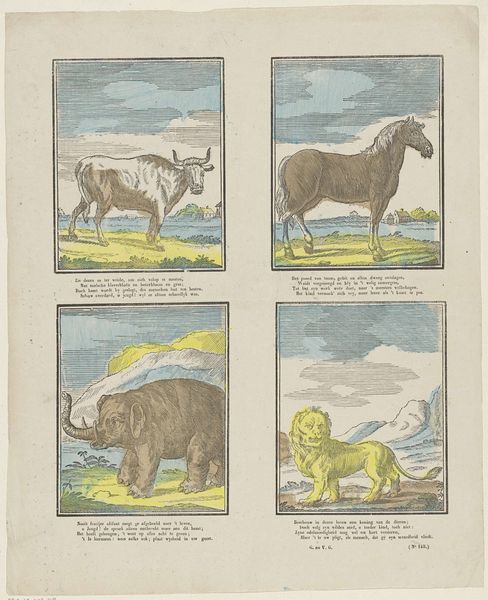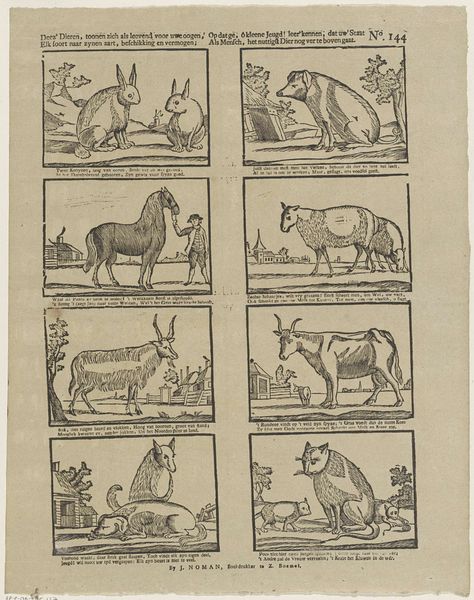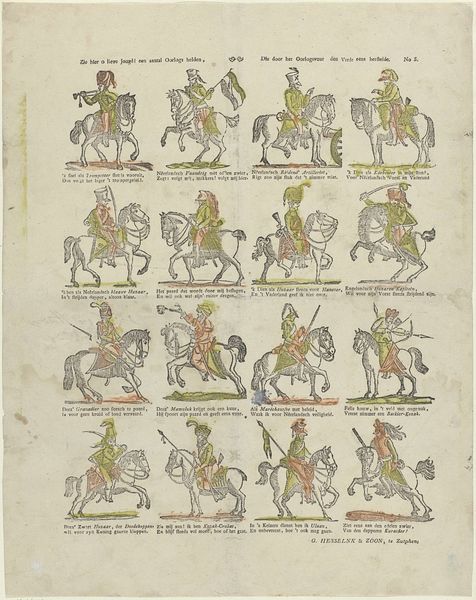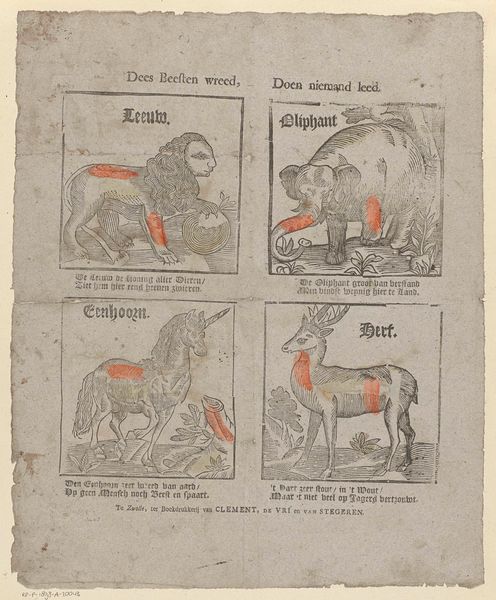
Aanschouwt hier lieve jeugd deze onderscheiden dieren, / Die of in onzen kring of vreemde oorden tieren 1806 - 1858
0:00
0:00
drawing, print, engraving
#
drawing
#
comic strip sketch
#
imaginative character sketch
#
animal
# print
#
dog
#
sketch book
#
personal sketchbook
#
idea generation sketch
#
sketchwork
#
journal
#
horse
#
sketchbook drawing
#
genre-painting
#
storyboard and sketchbook work
#
sketchbook art
#
engraving
Dimensions: height 403 mm, width 333 mm
Copyright: Rijks Museum: Open Domain
Curator: Here we have a rather intriguing piece, titled "Aanschouwt hier lieve jeugd deze onderscheiden dieren, / Die of in onzen kring of vreemde oorden tieren," which roughly translates to "Behold, dear youth, these distinct animals, who thrive either in our circle or in foreign lands." Created sometime between 1806 and 1858 by Willem Carl Wansleven, this work seems to be an engraving. Editor: Oh, what a delightful menagerie! It’s like stumbling upon a whimsical bestiary. There’s a childlike charm to the naive renderings and the folksy quality that gives it so much warmth, almost like thumbing through a cherished storybook from a bygone era. Curator: Precisely. Consider the socio-political context, these images accompanied didactic verses aimed at young audiences. The images and text instructed children not only about different animal species but also moral lessons. The presentation within these neat little boxes reinforces an idea of order. Editor: That's interesting to know. Though it does feel a bit constricting to confine all those vibrant animals into boxes; perhaps the orderly composition emphasizes a sense of control and domesticity, reflecting the human desire to categorize and comprehend the natural world? Still, you’ve got the noble horse, the steady ox, loyal dogs… Even the lion is defanged by domestication. Curator: The selection itself speaks volumes, does it not? Predominantly farm animals and familiar creatures, those useful or known—along with an aspirational gaze toward the exotic—all serve a distinct societal function. The lion for instance, might also allude to leadership. Editor: Good point, indeed. Perhaps that’s why he’s put in the lower right-hand corner of the panel, a spot of respect for the ‘king’. But I also feel a deeper imaginative undercurrent throughout it, beyond just the educational purpose. It almost whispers to explore a world of curious characters. Curator: Well, yes. Such "genre-painting" had a prominent position within a burgeoning print market during the artist’s lifetime. One cannot disregard market demands alongside intended pedagogical outcomes when analysing these works. Editor: Very true. Seeing all this gives me a hankering to pick up a pen and try to sketch the marvelous things about the animals here! Curator: A sentiment, I suspect, young readers centuries ago felt as well!
Comments
No comments
Be the first to comment and join the conversation on the ultimate creative platform.
